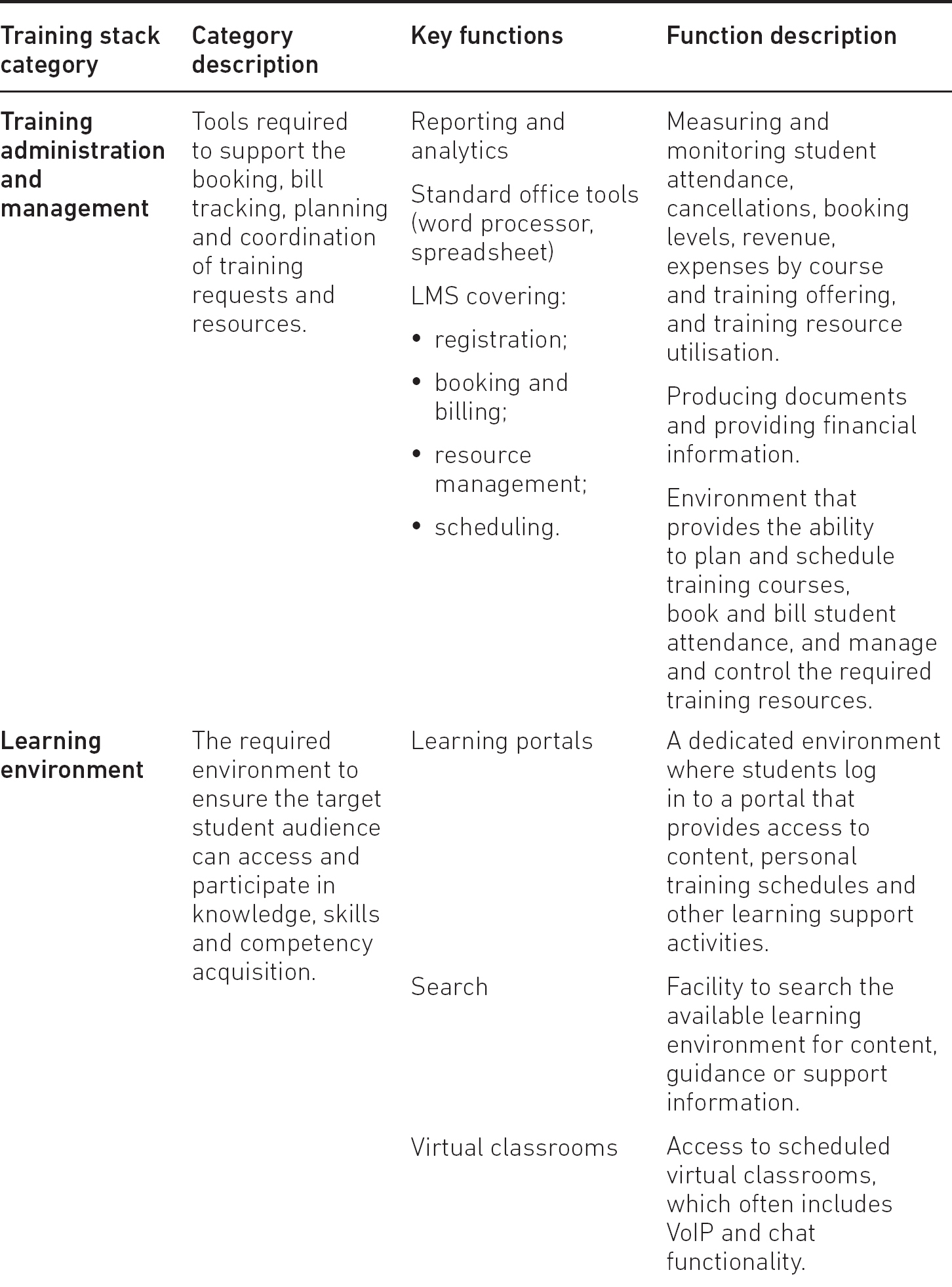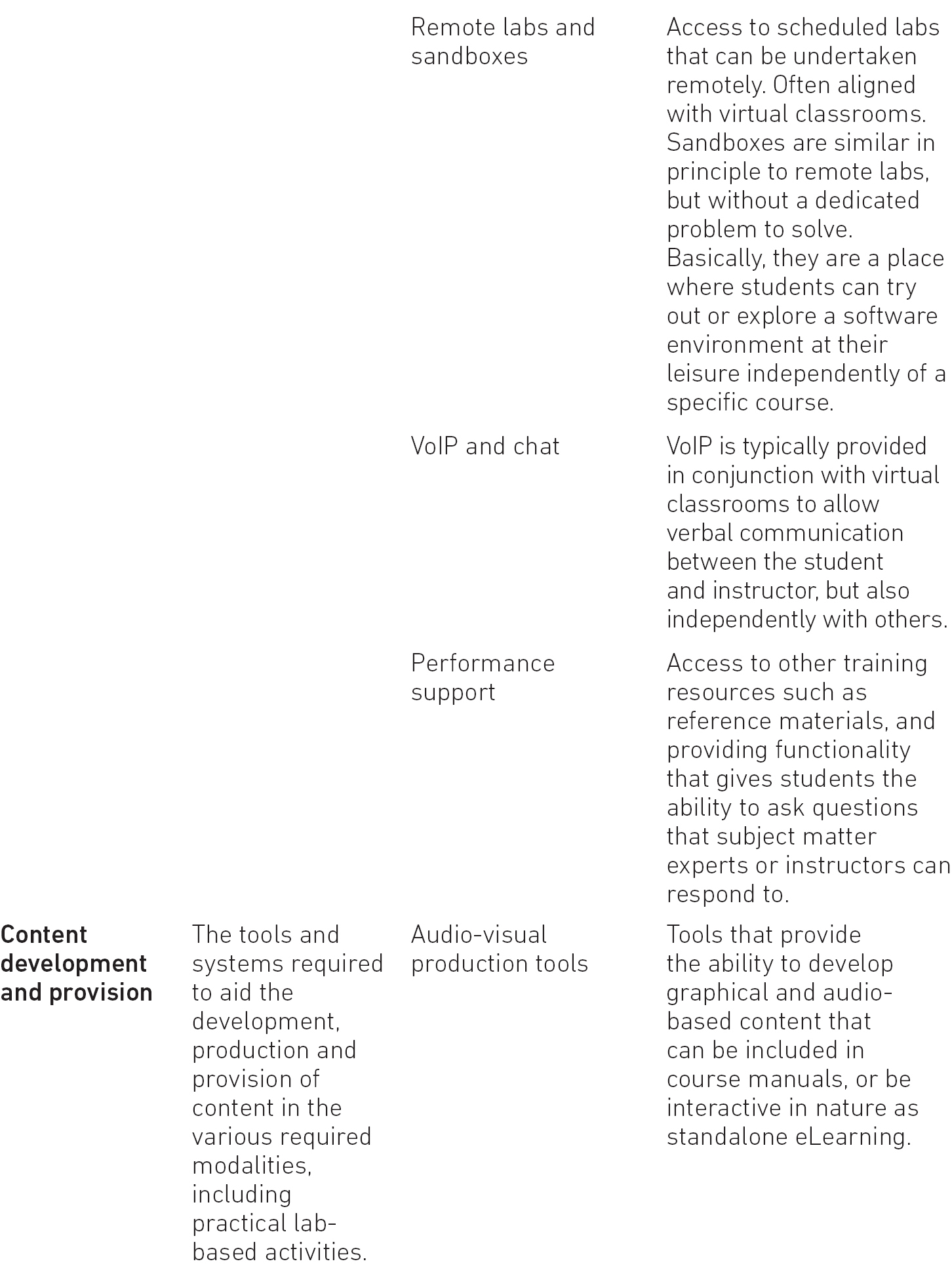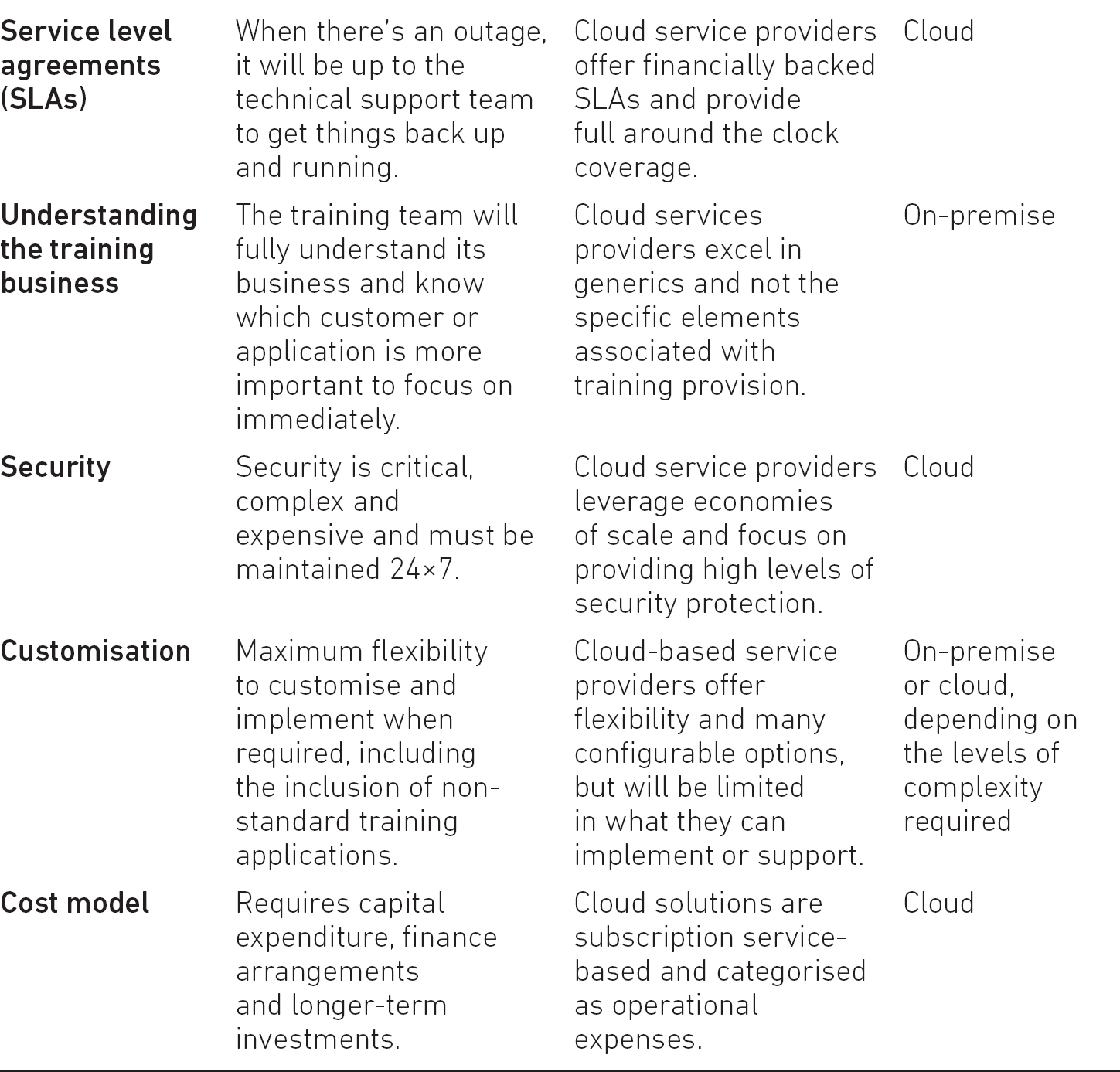Introduction to the systems and technical needs required to run a training business
Training platforms have been constantly evolving over the past 30 years. In the early 1980s, the Silton-Bookman Systems Registrar application provided a degree of automation in the enrolling of students on courses, recording attendance and tracking their training. In the current era, learning portals provide an integrated environment for training administration, content publishing, authoring and delivery.
Coupled with changes in the way people now prefer to learn, these learning portals also provide access and engagement with social media, collaboration and ecommerce tools. With the current rate of change and demands now being placed on learning technologies, the infrastructure and associated development tools are rapidly moving towards being provided in a hosted software as a service (SaaS) model.
For a training provider, the SaaS model provides significant advantages in terms of minimising infrastructure investment costs, supporting scalability and providing access to functional tools such as authoring and on-demand labs. For the target learner audience, it provides access to formal and informal content via a web interface with the ability to self-promote, track and bill use as required.
This chapter provides an insight into the training infrastructure and associated tools to consider for the running of a successful training business. The decision to purchase, subscribe, operate independently or integrate a tool via a SaaS solution is one of choice driven by cost, management overhead, scalability and access considerations.
All IT solutions require a structure based on what functions and features are required to ensure both the sponsor and the target audience are satisfied and serviced appropriately. The structure is often referred to as a technology stack, which primarily is a classification or categorisation of the main elements required to support the solution. For training, the stack could be referred to as a training or learning stack, with the categories referring to the main functions required to support the training business. Table 18.1 provides a generic example.
The basic requirements shown in Table 18.1 assist in the definition and formation of a learning infrastructure stack. Key to putting it together is understanding the nature of what is being provided and how the future of training is being visualised. The danger is building a solution to the current need and not planning for scalability and future amendments.
Table 18.1 Training infrastructure basic requirements
A simple approach to defining a learning stack is to consider who the target user base is in terms of whether they are mobile or web-based. Mobile access is growing at significant rates, especially among non-commercial users. However, screen size can impact the effectiveness of training and the graphical interactivity that is included. Thought should therefore be given to building a responsive web interface that can accommodate all screen sizes and provide a user interface that is acceptable on a mobile screen. This is important if the training content contains rich material for SEO.
Another learning stack consideration when building from scratch is capitalising on existing tools that have been tried and tested within a training environment requiring strong technology integration.
Finally, making the decision on whether to build, buy or use a cloud provider is also an important consideration; more on this later.
TMS, LMS, LCMS, OTHER: WHAT IS RUNNING YOUR BUSINESS?
To run a training business, a defined process, procedure and structure is required to register, track, bill and monitor activity within the training department. Back in the 1980s it was known as a training management system (TMS). The TMS was initially a standalone application resident on a single PC providing administrative support regarding the enrolment of students on courses, recording attendance and tracking training programme progress.
As technology evolved and the needs of training managers grew, the TMS was eclipsed by a more comprehensive and responsive network-based management system, known as a learning management system. As many LMSs were web-based, they enabled the provision of access to eLearning content that could be downloaded and included within a personalised and trackable training programme. LMS functionality also included multi-administered resource management (including instructors, facilities, equipment), booking and billing management, assessments, student completion- and cancellation-rate reporting, collaboration, instructor course scheduling and statistical analysis.
Some LMS vendors include performance management support via employee appraisals, competency management, skills-gap analysis, succession planning and 360-degree reviews. For training vendors with responsibilities for internal training, this is a useful and a valuable addition.
As an LMS was focused primarily on the delivery of eLearning, student administration and training delivery management support, it did not provide any functionality to create and manage content. As a consequence, learning content management systems were developed to broaden the scope of the LMS to provide an environment where developers, authors and instructional designers could create, store, reuse, manage, publish and deliver eLearning content from a central learning object repository. When an LCMS and LMS are integrated within a broader training management system, it provides a rich environment to develop, manage and publish training content that is delivered and administered via the LMS.
An LCMS provides the ability for content to be modified and republished for various audiences, maintaining both version and history control. Table 18.2 highlights the key functional differences between an LMS and an LCMS.
With advancements in both LMS and LCMS development, common functionality will naturally occur. Care is therefore required when assessing the purchase of new generation systems to ensure training business suitability.
Since the advent of Web 2.0, integrated websites are being developed that mirror the functionality of both an LMS and an LCMS. They have additional functionality included for social media support, collaboration and ecommerce tools to provide an environment that can support a hosted SaaS training model, and they are more commonly referred to as learning portals. For today’s learners and commercial training providers, the ability to provide access to informal content, articles, case studies, books and other learning materials is a powerful new opportunity to consider in relation to the continuing change taking place in the way people prefer to learn.
Table 18.2 LMS and LCMS functional differences
LMS/LCMS |
Functionality |
|
LMS |
• Content delivery. • Student registration, administration and attendance tracking. • Course scheduling. • Curriculum management. • Skills and competencies management. • Individual development plan support. • Reporting and assessment tools. • Training records management. • Resource management (instructors, training rooms; physical and virtual). • Performance management system integration. |
|
LCMS |
• Courseware authoring. • Collaborative content authoring and development. • Content management and version control. • Modality publishing. • LMS integration support. |
Most technologies available today offer a cloud-based solution, and learning technologies are no different. From a training executive’s perspective, cloud computing offers the potential to save capital cost investment, minimise headcount and provide better scalability and functionality.
In order to validate the potential of cloud versus owning and installing on-premise, it is important to understand the main differences. By way of definition, on-premise refers to training solutions deployed in the traditional manner where the technology infrastructure is acquired and the training LMS and LCMS are installed at the company’s own premises. Irrespective of whether the IT service has been outsourced to a service integrator, the physical assets still remain on the training group’s balance sheet.
Cloud computing refers to the delivery of on-demand computing resources such as a training LMS and LCMS via the internet on a pay-for-use basis, thus removing the requirement to provide the technology or be concerned with scalability or downtime issues. On the financial side, a cloud-based LMS solution no longer resides on the capital assets and therefore becomes a run-time cost of sale.
Making a decision about which solution should be chosen depends on some of the points listed below:
- employee expertise;
- resource availability;
- security or compliance requirements;
- budget availability;
- requirement for 24×7 access and technical support;
- scalability.
Table 18.3 provides some additional insight and suggestions regarding what to evaluate when deciding between an on-premise or cloud training solution.
Table 18.3 On-premise versus cloud

Choosing between on-premise and cloud is not mutually exclusive. Being able to pick and mix can be what is best for the business. For example, content development-based applications may be on-premise, with the lab and LMS cloud-based. One important factor to consider is that on-premise solutions represent large capital investments, whereas cloud-based solutions represent long-term subscription contracts. Weighing up the pros and cons of both options will assist in making a valid and balanced business decision.
All IT solutions require a structure based on what functions and features are required to ensure both the sponsor and the target audience are satisfied and serviced appropriately. The structure typically needs to provide support for training administration and management, learning environment, content development and provision, and social and collaboration spaces.
When assessing the scope of the required structure, both scalability and the ability to implement future amendments need to be factored in. This is where the decision on whether to build, buy or use a cloud provider is also an important consideration.
Many of today’s environments comprise network-based management systems, known as learning management systems (LMSs). As most LMSs are web-based, eLearning content can be downloaded and included within a personalised and trackable training programme, including multi-administered resource management, booking and billing management, assessments, student completion- and cancellation-rate reporting, collaboration, instructor course scheduling and statistical analysis.
LMSs can be integrated with learning content management systems (LCMSs) where developers, authors and instructional designers can create, store, reuse, manage, publish and deliver eLearning content from a central learning object repository. This provides a rich environment to develop, manage and publish training content that is delivered and administered via the LMS.
As the LMS and LCMS are feature rich environments, they lend themselves to being available as a cloud-based solution. This provides the potential to save capital cost investment, minimise headcount and provide better scalability and functionality.
Choosing between an on-premise or cloud solution is not mutually exclusive. The ability to pick and mix can be what is best for the business, and weighing up the pros and cons of both options assists in the making of valid and balanced business decisions.





